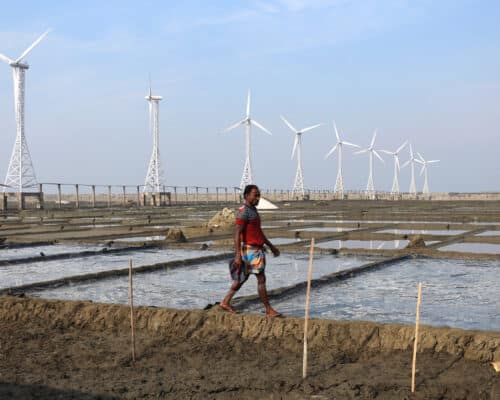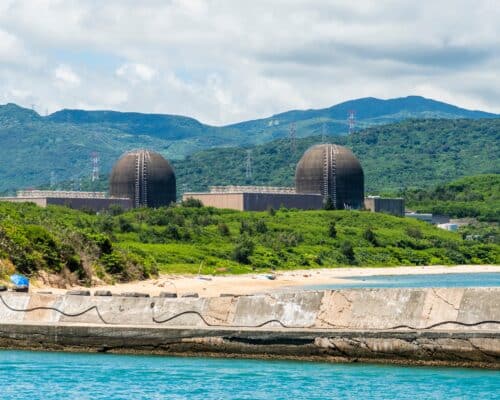Women’s Empowerment Can Be the Catalyst to Drive Asia-Pacific’s Energy Transition [Op-Ed]
Photo: Shutterstock / Viewfoto studio
12 March 2024 – by Liming Qiao
Asia-Pacific’s energy landscape is undergoing a significant transformation, but it can also propel a transformation of the region’s workforce, both driven by the pressing need to achieve net zero. As the world builds on the momentum driven by COP28’s tripling renewable energy pledge, we can also build an industry that represents a just future for all.
Our transition to sustainable energy sources must also recognise and harness the potential of women as catalysts for change. Female contributions are indispensable for the success and sustainability of the energy transition.
Traditionally, the energy industry has been dominated by men. It has been this way since the first experimental wind turbines were constructed in Europe and continues to this day.
The “Wind Energy: A Gender Perspective” report, released by IRENA and GWEC’s Women in Wind programme in 2020, found that around 21 per cent of the global wind energy workforce is made up of women, which is even below the 32 per cent share of women in the wider global renewables workforce. Those numbers highlight the gender disparity within the energy sector.
Leveraging Women’s Perspectives
The energy industry needs to break down these barriers and advocate for greater inclusion of women in key roles. Having a huge gender disparity in the industry limits the diversity of perspectives and solutions in energy policymaking and project implementation.
Women bring different perspectives and insights to energy policymaking. However, they are underrepresented in those roles and leadership positions. This can’t continue. If it were, the world would miss out on a wealth of untapped talent and expertise at a time when all our focus should be on delivering an enormous deployment of renewable energy.
By including women in energy policy formulation and implementation, we will ensure that policies are more responsive to the needs and priorities of all stakeholders, leading to more sustainable and inclusive energy systems.
Empowering Women to Take Charge
The 2020 Gender Perspective report also reflected a dire leadership gap, with women holding only eight per cent – yes, eight – of senior management roles in the global wind energy sector. Most women occupy administrative roles and non-STEM occupations in wind energy. We need to fill this gap to leverage women’s talent in leadership.
However, at GWEC, we do things differently. A third of our senior leadership team comprises women, myself included, as the Head of GWEC’s Asia team, leading policy and advocacy efforts for wind energy development in the APAC region.
A stronger female presence and voice in the energy sector benefits society. Our women leaders are widely recognised in the industry. For example, Joyce Lee, GWEC’s Head of Policy and Projects, is part of LinkedIn’s Top Voices program, an invitation-only group of experts worldwide. As an influencer in the professional online space, she shares her valuable energy policy expertise through her online voice and demonstrates thought leadership for women in energy.
Building A Supportive Environment For Women to Thrive
Besides advocating for women to take the lead, the communities within the energy space must build supportive networks and mentorship arrangements for women to realise their potential and fully contribute to the energy transition.
Internally, within GWEC, we actively run mentorship programmes with newcomers, a large percentage of whom are women. For example, in the recent expansion of the Asia team last September, 86% of the new hires were female, and half of them took on policy and advocacy roles to drive key APAC market changes in wind energy.
These new hires do not necessarily come from the energy industry. We encourage internal mentorships by pairing new joiners with subject matter experts within our organisation so that they can transition seamlessly into their new roles.
Externally, GWEC also runs the Women in Wind (WiW) programme, which is dedicated to training and mentoring women in the wind industry. The programme is well sought after globally, with high yearly application rates. WiW provides participants with global perspectives, multidisciplinary experience, and the network to advance to leadership positions.
Emerging Wind Industry Brings Opportunities
As the renewable energy industry grows, this new market opens up other emerging avenues, such as offshore wind, giving women more opportunities to contribute to various roles and excel in traditionally male-dominated fields on policy regulation or business development work.
This is exemplified in the 2021 Women in the Taiwan Offshore Wind Industry report. We saw a great representation of women entering the offshore wind field, such as in Taiwan, where 95% of offshore wind companies have female line managers and 60% of women directors with significant authority over their companies and the industry.
In addition, closing the gender gap in the energy sector allows us to achieve more by leveraging each gender’s strengths and driving the energy transition. A by-product of growing renewable energy is to help deliver on UN.
Sustainable Development Goal 5 – achieving gender equality and empowering women.
We need to level the playing field so everyone can participate equally in the wind energy workforce. Recognising that women’s representation is necessary for Asia’s energy transition is a first step.
We can unlock new opportunities, drive innovation, and build more resilient and sustainable energy systems that benefit all stakeholders by harnessing women’s talents, perspectives, and leadership.
Liming Qiao is currently the Asia Director at Global Wind Energy Council. Since joining GWEC in 2008, Liming has been in various roles at the association, focusing on policy and China-related issues. Liming’s current focus is on wind energy policy in Asia, and she is leading GWEC’s South East Asia (SEA) Task Force, a working group with major industry and institutional stakeholders active in SEA to advance better policy for wind energy development in the region. Before joining GWEC, she worked with international organisations on various climate-related programmes, participated in climate negotiations as an observer for many years and was familiar with the international climate policy process and carbon trading.
Global Wind Energy Council (GWEC) is a member-based organisation representing the entire wind energy sector. The members of GWEC represent over 1,500 companies, organisations, and institutions in more than 80 countries, including manufacturers, developers, component suppliers, research institutes, national wind and renewables associations, electricity providers, and finance and insurance companies.
Disclaimer: The views and opinions expressed in this article are those of the author and do not necessarily reflect the official policy or position of Energy Tracker Asia.








